What We Can Do to Promote Biodiversity in Our Gardens
In a world where urbanization and climate change threaten the delicate balance of our ecosystems, gardens can become powerful allies in the fight for biodiversity. By transforming our personal green spaces into vibrant habitats, we not only enhance the beauty of our surroundings but also support a myriad of wildlife. Imagine stepping into a garden that buzzes with the sounds of bees, flutters with butterflies, and thrives with a variety of plants. This article explores various strategies to enhance biodiversity in garden spaces, highlighting the importance of diverse ecosystems and practical steps gardeners can take to support wildlife and plant variety.
Using native plants in gardens is one of the most effective ways to support local ecosystems. Native plants are like the local cuisine for wildlife; they provide the food and habitat that local creatures have evolved to depend on. Not only do these plants require less maintenance and water compared to non-native species, but they also help create a balanced ecosystem. By incorporating a variety of native plants, you can attract a diverse range of pollinators and other beneficial insects. Consider creating a native plant garden by selecting species that naturally thrive in your region. This can lead to a flourishing garden that is both beautiful and beneficial to local wildlife.
When we talk about gardening, the term "organic" often comes up, and for good reason! Organic gardening avoids synthetic fertilizers and pesticides, which can harm the environment and reduce biodiversity. By practicing organic gardening, you promote a healthier ecosystem that enhances soil quality and attracts beneficial insects. Think of your garden as a mini ecosystem where every element plays a role. For instance, ladybugs and lacewings are natural predators of aphids, and by avoiding harmful chemicals, you invite these helpful insects to take up residence in your garden. This not only helps control pests but also contributes to overall garden biodiversity.
Have you ever noticed how a garden flourishes when it’s full of buzzing bees and fluttering butterflies? These pollinators are crucial for the reproduction of many plants. By creating spaces that attract pollinators, you can significantly enhance your garden's biodiversity. Planting a variety of flowering plants that bloom at different times throughout the season ensures that there is always something for these important species to feed on. Consider including plants like lavender, coneflowers, and milkweed in your garden. Not only do they look stunning, but they also provide essential resources for pollinators.
Water is life, right? Adding ponds or birdbaths to your garden can create habitats for aquatic life and provide drinking sources for birds and other wildlife. Just like a bustling cafe attracts customers, a water feature can attract a variety of species to your garden. Imagine the joy of watching birds splash around in a birdbath or frogs hopping near a pond. These features not only enhance the biodiversity of your garden ecosystem but also add a serene ambiance that can make your garden a peaceful retreat.
Have you ever heard the saying, "Teamwork makes the dream work"? This is especially true in gardening! Companion planting involves growing different plants together for mutual benefits, such as pest control and improved growth. For example, planting basil alongside tomatoes can enhance the flavor of the tomatoes while repelling harmful pests. By practicing companion planting, you can create a more diverse and resilient garden that thrives on cooperation. It’s like hosting a dinner party where all the guests get along and contribute to a fabulous meal!
Just like we need a roof over our heads, wildlife needs shelter too! Building habitats like birdhouses, insect hotels, and brush piles can offer refuge for various species. By providing these shelters, you encourage wildlife to take up residence in your garden, contributing to its biodiversity. Imagine the thrill of seeing a family of birds nesting in your birdhouse or watching butterflies flit in and out of an insect hotel. These small actions can have a big impact on the health of your garden ecosystem.
Let’s face it: traditional lawns can be a bit of a biodiversity desert. By minimizing lawn spaces, you open up opportunities for wildflowers and other plants to thrive. This fosters a more diverse ecosystem that supports various insects and wildlife. Consider replacing sections of your lawn with native wildflower patches or ground covers. Not only does this reduce the need for mowing and maintenance, but it also creates a vibrant tapestry of life in your garden.
One of the most powerful ways to promote biodiversity is to engage your neighbors and local organizations in biodiversity initiatives. Community gardens and workshops can raise awareness and promote collective action for biodiversity. By sharing your knowledge and experiences, you can inspire others to take action in their own gardens. Imagine a neighborhood where every garden is a haven for wildlife; the collective impact would be astounding!
Finally, just like any good gardener knows, it’s essential to regularly assess the health of your garden and its biodiversity. Keeping a close eye on what works and what doesn’t can help identify successful strategies and areas for improvement. Adaptation is key to ensuring ongoing support for local ecosystems. So grab a notebook and start tracking the species you see and the plants that thrive. Your garden will thank you for it!
- What are native plants, and why are they important? Native plants are species that naturally occur in a specific region. They are important because they support local wildlife and require less maintenance.
- How can I attract more pollinators to my garden? Plant a variety of flowering plants that bloom at different times and avoid using pesticides.
- What are some easy organic gardening practices? Start by composting, using natural pest control, and choosing organic seeds and plants.
- How can I involve my community in biodiversity efforts? Organize community gardening events, workshops, or educational talks to raise awareness.

Create Native Plant Gardens
When it comes to fostering biodiversity in our gardens, one of the most impactful steps we can take is to . Native plants are those that have evolved in a specific region over thousands of years, adapting perfectly to the local climate, soil, and wildlife. By incorporating these plants into our gardens, we not only celebrate our local flora but also provide essential resources for the fauna that depend on them.
Imagine walking through a garden bursting with vibrant colors and buzzing with life. That’s the magic of native plants! They offer a natural habitat for local wildlife, including birds, butterflies, and beneficial insects. For instance, a garden filled with native wildflowers can attract pollinators like bees and butterflies, which are crucial for the reproduction of many plants. In contrast, non-native species often require more water and maintenance, as they struggle to adapt to the local conditions.
Another significant advantage of native plant gardens is their low maintenance requirements. Once established, these plants typically require less watering and are more resistant to local pests and diseases. This means less reliance on synthetic fertilizers and pesticides, which can harm the environment. Here’s a quick comparison:
| Feature | Native Plants | Non-Native Plants |
|---|---|---|
| Water Requirements | Low | High |
| Pest Resistance | High | Varies |
| Maintenance | Low | High |
| Support for Wildlife | High | Varies |
So, how can you get started with creating your own native plant garden? First, research the native plants in your area. Local extension services, botanical gardens, or native plant societies can provide you with a wealth of information. Choose a variety of plants that bloom at different times throughout the growing season to ensure that there’s always something flowering in your garden. This not only attracts a diverse range of pollinators but also creates a beautiful display of colors and textures.
Incorporating native plants into your garden is like throwing a party for local wildlife. You’re not just planting flowers; you’re creating a thriving ecosystem. And the best part? You’ll be contributing to the preservation of local biodiversity, which is vital for the health of our planet. So, roll up your sleeves, dig into that soil, and let’s make our gardens a sanctuary for nature!
Remember, every little bit helps. Even small patches of native plants can make a significant difference in supporting local ecosystems. So why not start today? Your garden can be a vibrant testament to the beauty and resilience of nature.
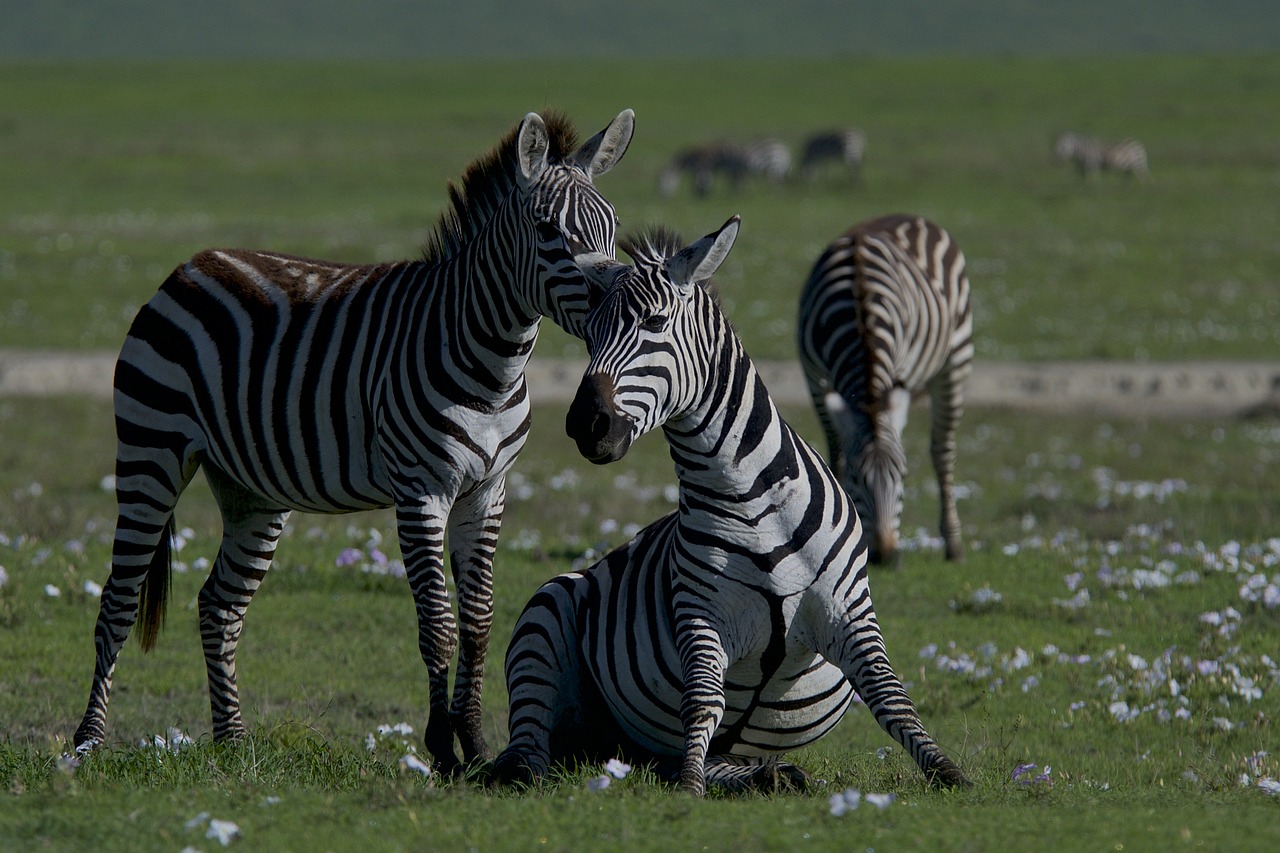
Implement Organic Gardening Practices
When you think about gardening, what comes to mind? Beautiful flowers, fresh vegetables, perhaps a peaceful retreat from the hustle and bustle of daily life? But have you ever considered how the way you garden can impact the environment? Implementing organic gardening practices is not just a trend; it's a vital step towards creating a healthier ecosystem in your backyard. By avoiding synthetic fertilizers and pesticides, you're not only protecting your garden but also promoting a thriving habitat for a variety of organisms.
Organic gardening is like treating your garden as a living organism. Just as we nourish our bodies with wholesome foods, our gardens too need the right kind of nutrients. Instead of chemical fertilizers that can leach into waterways and harm local wildlife, organic practices emphasize the use of natural amendments. For instance, compost made from kitchen scraps and yard waste enriches the soil with essential nutrients while improving its structure. This means your plants can grow stronger and healthier, which in turn attracts beneficial insects.
Speaking of beneficial insects, did you know that organic gardening can significantly boost their presence in your garden? By creating a balanced ecosystem, you encourage natural pest controllers like ladybugs and lacewings to take up residence. These little warriors feast on harmful pests, reducing the need for chemical interventions. It’s like having your own army of tiny gardeners working tirelessly to keep your plants safe!
Moreover, organic gardening practices often lead to improved soil quality. Healthy soil is the foundation of a flourishing garden, and organic methods focus on building this foundation. Techniques such as crop rotation and cover cropping not only prevent soil depletion but also enhance biodiversity. For example, planting legumes can fix nitrogen in the soil, benefiting subsequent crops. This approach is akin to rotating your diet to ensure you get a variety of nutrients—your garden needs diversity too!
Let’s not forget about the water! Organic gardening promotes practices that improve water retention in the soil, which is crucial in times of drought. Using mulch, for instance, helps keep the soil moist and reduces the need for frequent watering. Think of mulch as a cozy blanket for your plants, keeping them warm and hydrated. This not only saves water but also creates a habitat for earthworms and other beneficial organisms that contribute to soil health.
In addition, organic gardening encourages the use of companion planting, where different plants are grown together for mutual benefits. For instance, planting marigolds alongside vegetables can deter pests naturally. This method not only enhances biodiversity but also creates a more resilient garden ecosystem. It’s like having your friends over for a potluck dinner; everyone brings something unique to the table, making the meal richer and more enjoyable!
In conclusion, implementing organic gardening practices is a powerful way to enhance biodiversity in your garden. By nurturing the soil, attracting beneficial insects, and creating a balanced ecosystem, you’re not just growing plants—you’re fostering a vibrant community of life. So, why not give it a try? Your garden will thank you, and so will the planet!
- What are the benefits of organic gardening? Organic gardening promotes a healthier ecosystem, improves soil quality, and attracts beneficial insects.
- Can I still use fertilizers in organic gardening? Yes, but they should be natural fertilizers like compost or manure instead of synthetic options.
- How can I attract beneficial insects to my garden? Plant a variety of flowers, avoid pesticides, and create habitats for them, such as insect hotels.
- Is organic gardening more time-consuming? While it may require a bit more planning, the long-term benefits often outweigh the initial investment of time.
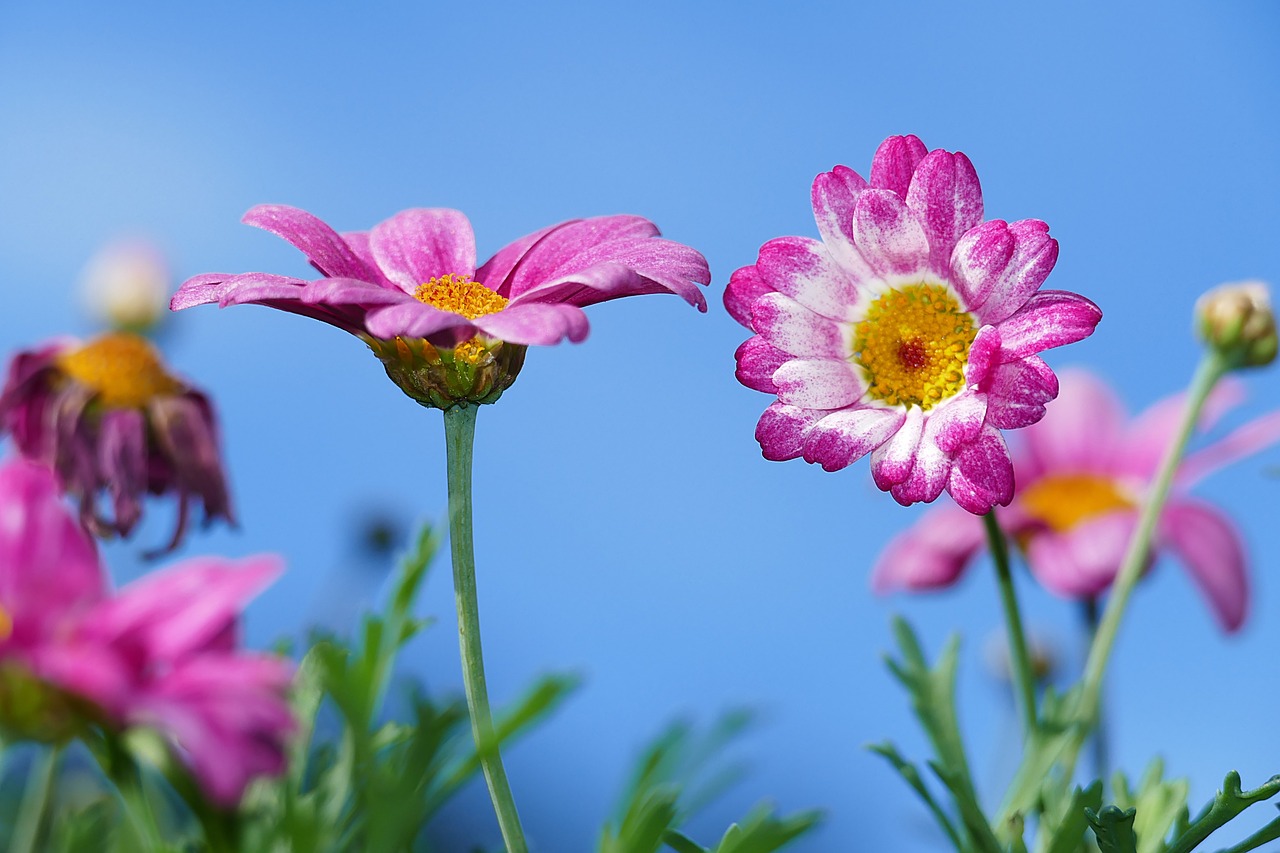
Encourage Pollinator Habitats
Creating spaces that attract pollinators, such as bees and butterflies, is crucial for plant reproduction and overall ecosystem health. These little creatures are not just pretty to look at; they play a vital role in our food production and the flourishing of diverse plant species. Imagine your garden as a bustling city, where every flower is a restaurant serving up delicious meals to its buzzing patrons. By planting a variety of flowering plants, you can provide essential resources like nectar and pollen, ensuring that your garden becomes a hotspot for these important species.
To effectively attract pollinators, consider incorporating a mix of native flowering plants that bloom at different times throughout the growing season. This strategy ensures that there’s always something in bloom for pollinators to feast on. For instance, early bloomers like crocus and snowdrops can provide sustenance in the spring, while summer favorites like coneflowers and sunflowers can keep the buzz going through the warmer months. Not only does this approach support pollinators, but it also adds a beautiful tapestry of color to your garden.
Moreover, creating a diverse habitat is essential. Pollinators thrive in environments that offer shelter and nesting sites. You can achieve this by leaving some areas of your garden a bit wild—let some native grasses grow tall, or leave a patch of bare soil for ground-nesting bees. You could also consider adding features like:
- Bee hotels: These are simple structures made from natural materials that provide nesting sites for solitary bees.
- Butterfly gardens: Incorporate host plants for caterpillars, such as milkweed for monarchs, alongside nectar-rich flowers.
- Brush piles: A pile of twigs and branches can serve as a cozy home for many beneficial insects.
Don't forget the importance of avoiding synthetic pesticides and herbicides, which can be harmful to pollinators. Instead, opt for organic gardening practices that promote a healthy ecosystem. By using natural pest control methods and encouraging beneficial insects, you create a safe haven for pollinators to thrive.
In addition, consider adding water sources like shallow dishes filled with pebbles and water, providing a safe drinking spot for thirsty pollinators. Just like us, they need hydration to stay active and healthy. Remember, a garden that supports pollinators is not just beneficial for them; it also enhances the productivity of your plants, leading to a bountiful harvest.
Ultimately, by fostering a welcoming environment for pollinators, you are not only contributing to the health of your garden but also playing a part in the larger narrative of environmental conservation. Every small effort counts, and by making conscious choices in your gardening practices, you can create a vibrant ecosystem that supports both wildlife and plant diversity.
Q: What are the best plants to attract pollinators?
A: Some excellent choices include lavender, bee balm, coneflowers, and sunflowers. These plants are rich in nectar and pollen, making them favorites among pollinators.
Q: How can I create a bee-friendly garden?
A: To create a bee-friendly garden, plant a variety of native flowers, avoid pesticides, and provide shelter like bee hotels. Also, consider leaving some areas of your garden undisturbed for ground-nesting bees.
Q: Do I need to provide water for pollinators?
A: Yes! Providing shallow water sources can help pollinators stay hydrated. Just make sure to add pebbles or stones to prevent them from drowning.
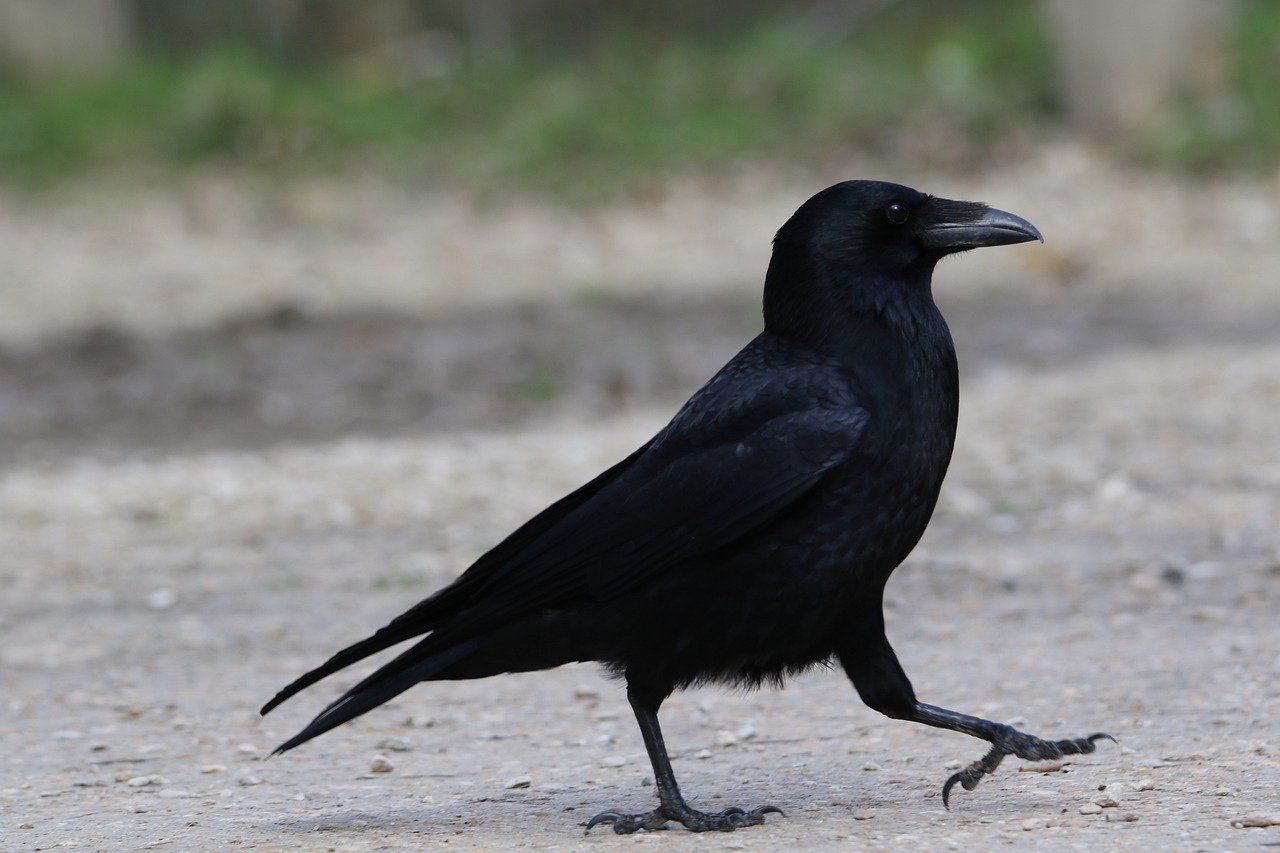
Incorporate Water Features
When we think about enhancing biodiversity in our gardens, one of the most delightful and effective methods is to . Imagine a tranquil pond, the gentle sound of water flowing, or a charming birdbath—these elements not only beautify your garden but also create essential habitats for a variety of wildlife. Water features can serve as a magnet for biodiversity, attracting creatures that might otherwise pass by your garden. From frogs and dragonflies to birds and beneficial insects, the presence of water can transform your garden into a vibrant ecosystem.
Adding a water feature can be as simple or as elaborate as you desire. A small birdbath can suffice for those with limited space, while a larger pond can provide a more extensive habitat. Here are a few reasons to consider adding water features to your garden:
- Habitat Creation: Water features provide habitats for aquatic life, such as frogs and fish, which can contribute to the overall biodiversity of your garden.
- Drinking Source: Birds and other wildlife need water to survive. A birdbath or pond offers a reliable drinking source, especially during dry spells.
- Insect Attraction: Many beneficial insects, including dragonflies and damselflies, are drawn to water. Their presence can help control pests in your garden.
Moreover, water features can also support plant diversity. Aquatic plants, such as water lilies and cattails, can thrive in ponds, adding another layer of biodiversity. These plants not only provide shelter for fish and insects but also contribute to the overall health of the water by filtering pollutants and providing oxygen. You might be surprised to learn that even the smallest water feature can support a surprising amount of life!
When planning your water feature, consider the following:
| Feature Type | Benefits | Considerations |
|---|---|---|
| Birdbath | Attracts birds, easy to maintain | Needs regular cleaning and water replenishment |
| Pond | Supports diverse wildlife, beautiful aesthetics | Requires more space and maintenance |
| Water Fountain | Creates soothing sounds, attracts birds | May require electricity and regular cleaning |
In conclusion, incorporating water features into your garden can significantly enhance its biodiversity. Not only do they provide essential resources for wildlife, but they also create a serene and inviting atmosphere. So, whether you opt for a simple birdbath or a grand pond, remember that your water feature can be a vital part of your garden's ecosystem. Embrace the beauty and benefits of water, and watch as your garden flourishes with life!
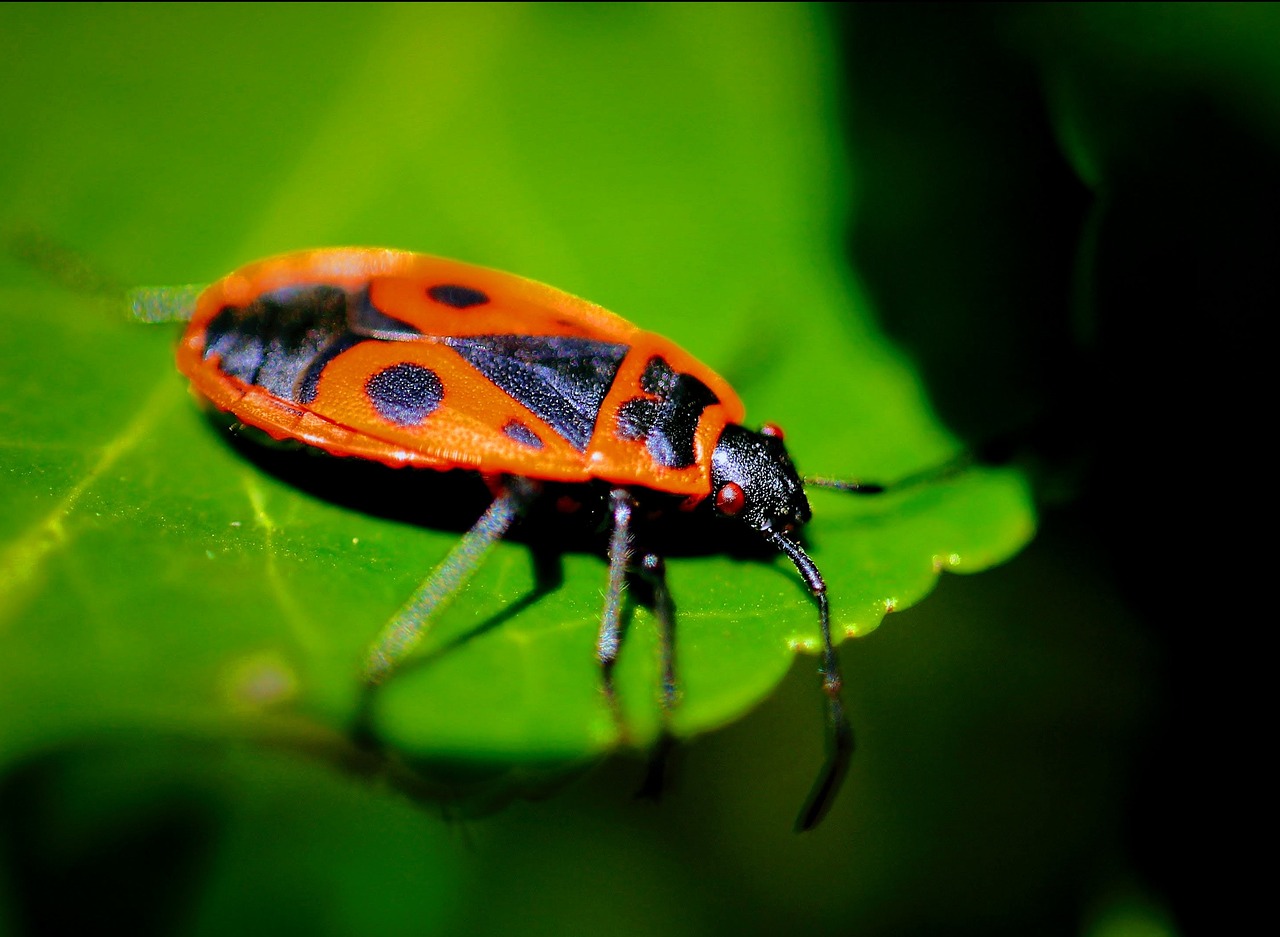
Practice Companion Planting
Have you ever thought about how plants can actually help each other thrive? Companion planting is a fantastic technique that allows you to create a more vibrant and resilient garden ecosystem. By strategically growing different plants in proximity, you can maximize their benefits and minimize the downsides. Imagine your garden as a community where each plant plays a unique role, just like people in a neighborhood. Some plants can deter pests, while others can enhance growth or improve flavor. It's like having a team of superheroes working together for a common goal!
One of the most popular examples of companion planting is the classic trio of tomatoes, basil, and marigolds. Tomatoes love the company of basil because it not only enhances their flavor but also repels certain pests that might otherwise munch on your precious fruit. Marigolds, on the other hand, are like the garden's bodyguards, warding off nematodes and other harmful insects. By planting these three together, you're creating a harmonious environment that boosts their overall health and productivity.
But the benefits of companion planting extend beyond just pest control. Some plants can improve soil health, while others can provide shade or support for climbing varieties. For instance, consider using corn as a natural trellis for beans, which can climb up the stalks while simultaneously fixing nitrogen in the soil. This not only enhances the growth of both plants but also enriches the soil for future crops. It's a win-win situation!
| Plant Pairing | Benefits |
|---|---|
| Tomatoes & Basil | Enhances flavor & repels pests |
| Corn & Beans | Support structure & nitrogen fixation |
| Carrots & Onions | Pest deterrent & improved growth |
When planning your companion planting strategy, it’s essential to consider the specific needs of each plant. Some may require more sunlight, while others thrive in shadier conditions. Additionally, be mindful of their growth habits. For example, tall plants can overshadow shorter ones, so placing them wisely in your garden layout is crucial. Think of your garden as a well-choreographed dance, where each plant has its part to play, ensuring that everyone gets the spotlight they need!
Moreover, companion planting can also reduce the need for chemical fertilizers and pesticides. By fostering a natural balance, you can create an environment where beneficial insects can thrive, ultimately leading to a healthier garden. Just like a thriving community, a diverse garden ecosystem can fend off threats more effectively than a monoculture. So, why not embrace the power of partnerships in your garden?
In conclusion, practicing companion planting is not just about putting different plants together; it's about understanding their relationships and how they can benefit one another. By adopting this approach, you're not only enhancing the biodiversity of your garden but also contributing to a more sustainable and eco-friendly gardening practice. So, grab your seeds, gather your friends, and start planting those companions!
Q: What is companion planting?
A: Companion planting is the practice of growing different plants together to enhance growth, improve flavor, or deter pests.
Q: Can all plants be companions?
A: Not all plants work well together. It's essential to research which plants have beneficial relationships and which may compete for resources.
Q: How can I learn more about companion planting?
A: Many gardening books and online resources provide detailed information on effective plant pairings and their benefits.
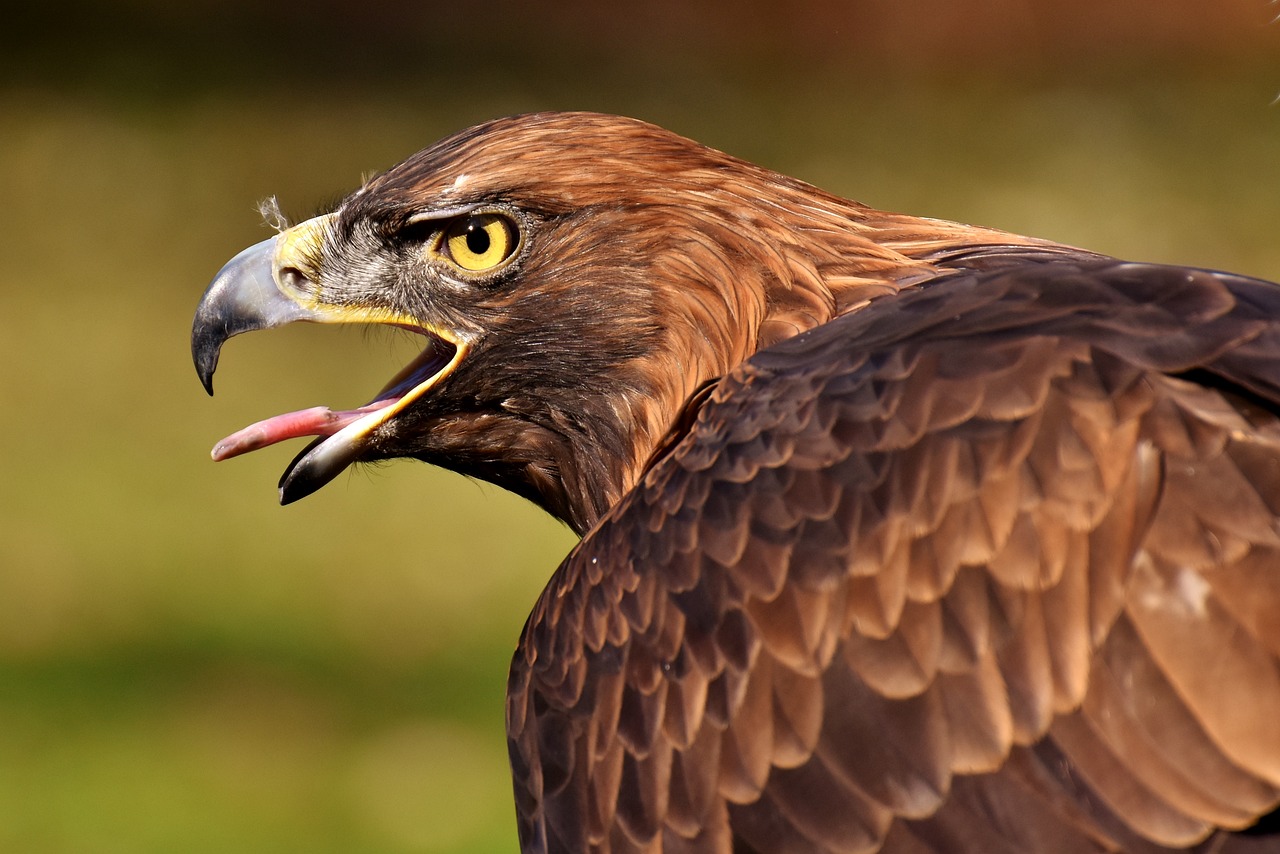
Provide Shelter for Wildlife
Creating a welcoming environment for wildlife in your garden is not just a noble endeavor; it's a vital step towards promoting biodiversity. By providing shelter, you can attract a variety of species, from birds and insects to small mammals, enriching your garden's ecosystem. Think of your garden as a sanctuary, a safe haven where wildlife can thrive. Just as we seek comfort in our homes, animals need spaces where they can find protection from predators, harsh weather, and other threats.
One effective way to offer shelter is by building birdhouses and insect hotels. Birdhouses can be customized to suit different bird species, ensuring that your garden becomes a preferred nesting site. For example, bluebirds and wrens have specific requirements for their nesting boxes, such as entrance hole size and internal dimensions. Here’s a simple table to illustrate some common birdhouse specifications:
| Bird Species | Entrance Hole Diameter | Height of Box | Floor Size |
|---|---|---|---|
| Eastern Bluebird | 1.5 inches | 10 inches | 5 x 5 inches |
| House Wren | 1.25 inches | 8 inches | 4 x 4 inches |
| Tree Swallow | 1.5 inches | 10 inches | 5 x 5 inches |
Insect hotels, on the other hand, serve as vital habitats for beneficial insects like bees and ladybugs. These structures can be made from natural materials like bamboo, wood, and straw, providing nooks and crannies where insects can lay eggs and seek shelter. It’s like giving them a cozy apartment in your garden! By encouraging these tiny helpers, you’re not just enhancing biodiversity; you’re also promoting natural pest control.
Another simple yet effective method to provide shelter is by creating brush piles. These can be made from fallen branches, leaves, and other garden debris. Not only do they serve as homes for various creatures, but they also contribute to soil health as they decompose. Imagine a bustling community of critters making their home in your brush pile, from rabbits to hedgehogs, all playing a role in the ecosystem.
Additionally, consider planting dense shrubs and perennial plants. These can offer cover and nesting sites for birds and small mammals. Just like a thick forest provides shelter for wildlife, your garden can mimic these natural habitats. The more diverse your plant selection, the more species you can attract and support.
In conclusion, providing shelter for wildlife in your garden is a rewarding way to contribute to biodiversity. By incorporating birdhouses, insect hotels, brush piles, and dense plantings, you’re not only creating a refuge for animals but also enriching your own gardening experience. Remember, every small effort counts, and your garden can become a vital piece of the larger ecological puzzle.
- What types of wildlife can I attract with shelters? You can attract birds, bees, butterflies, and small mammals like rabbits and hedgehogs.
- How do I choose the right location for birdhouses? Place birdhouses in quiet areas, away from predators, and ideally near food sources like flowering plants.
- What materials are best for building insect hotels? Natural materials such as bamboo, wood, and straw are excellent choices.
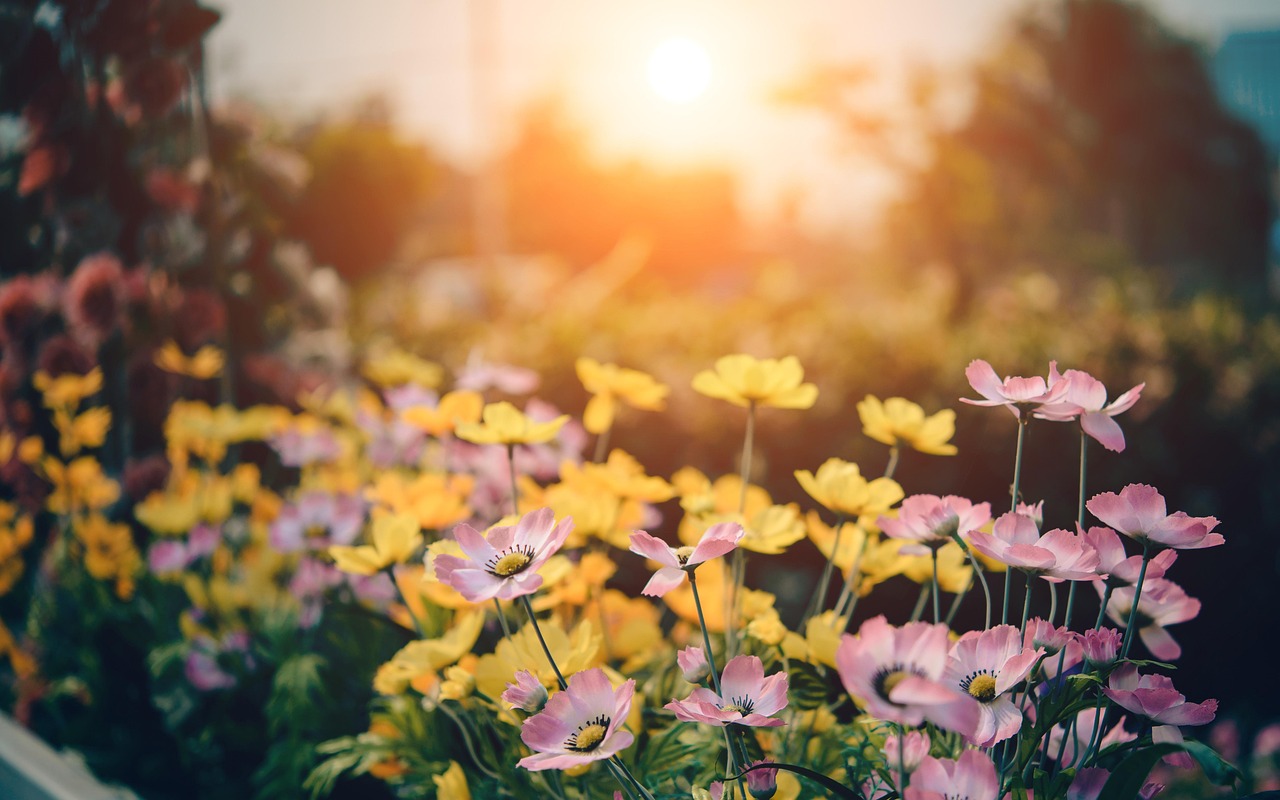
Reduce Lawn Areas
In today's world, the traditional green lawn is often seen as a symbol of beauty and status, but have you ever stopped to think about what that lawn really represents? A vast expanse of grass may look nice, but it’s often a biodiversity desert, offering little to no support for the local wildlife. By reducing lawn areas, you can transform your garden into a vibrant ecosystem bursting with life. Imagine swapping out that monotonous sea of green for a diverse tapestry of wildflowers, shrubs, and native grasses that provide food and habitat for various creatures. It’s like trading in a plain, old TV for a high-definition screen that brings your favorite shows to life!
One of the key benefits of reducing lawn areas is that it allows for the introduction of native plants and other flora that are better suited to your local environment. These plants not only require less water and maintenance but also attract a host of beneficial insects, birds, and other wildlife. For instance, instead of a large patch of grass, consider creating a wildflower meadow. This can be as simple as letting a portion of your lawn grow and seeding it with native wildflower seeds. The result? A colorful, buzzing habitat that supports pollinators like bees and butterflies, which are essential for the health of our ecosystems.
Besides aesthetics, reducing lawn areas can also lead to significant environmental benefits. Lawns typically require a lot of water, fertilizers, and pesticides, which can have detrimental effects on local waterways and ecosystems. By minimizing these areas, you not only conserve water but also reduce the need for chemical treatments that can harm wildlife. Think of it as a way to give back to the environment while still enjoying a beautiful space. You might be surprised to learn that a well-planned garden can thrive with far less water and care than a traditional lawn.
Moreover, reducing lawn areas opens up opportunities for creating microhabitats. For example, you could incorporate small patches of native grasses, wildflowers, or even a vegetable garden. These patches can serve as essential food sources for insects, birds, and other wildlife, fostering a rich biodiversity right in your backyard. Imagine watching a family of rabbits nibbling on clover or spotting a butterfly fluttering from flower to flower—these are the moments that make gardening a rewarding experience.
To help you visualize the impact of reducing lawn areas, here’s a simple comparison:
| Traditional Lawn | Reduced Lawn with Native Plants |
|---|---|
| High water usage | Low water usage |
| Requires fertilizers and pesticides | Supports natural pest control |
| Limited wildlife support | Attracts diverse wildlife |
| Monotonous appearance | Colorful and dynamic landscape |
In conclusion, reducing lawn areas is a simple yet effective strategy to enhance biodiversity in your garden. By transforming those grassy expanses into diverse habitats, you’re not just beautifying your space; you’re also making a significant contribution to the health of local ecosystems. So why not take the plunge? Your garden—and the wildlife that calls it home—will thank you!
- What types of plants should I use to replace my lawn? Consider native wildflowers, native grasses, and shrubs that are well-adapted to your local climate.
- How can I gradually reduce my lawn area? Start by designating small sections of your lawn to convert into flower beds or wildflower patches.
- Will reducing my lawn area increase pests in my garden? Not necessarily! In fact, a diverse ecosystem can help control pests naturally.
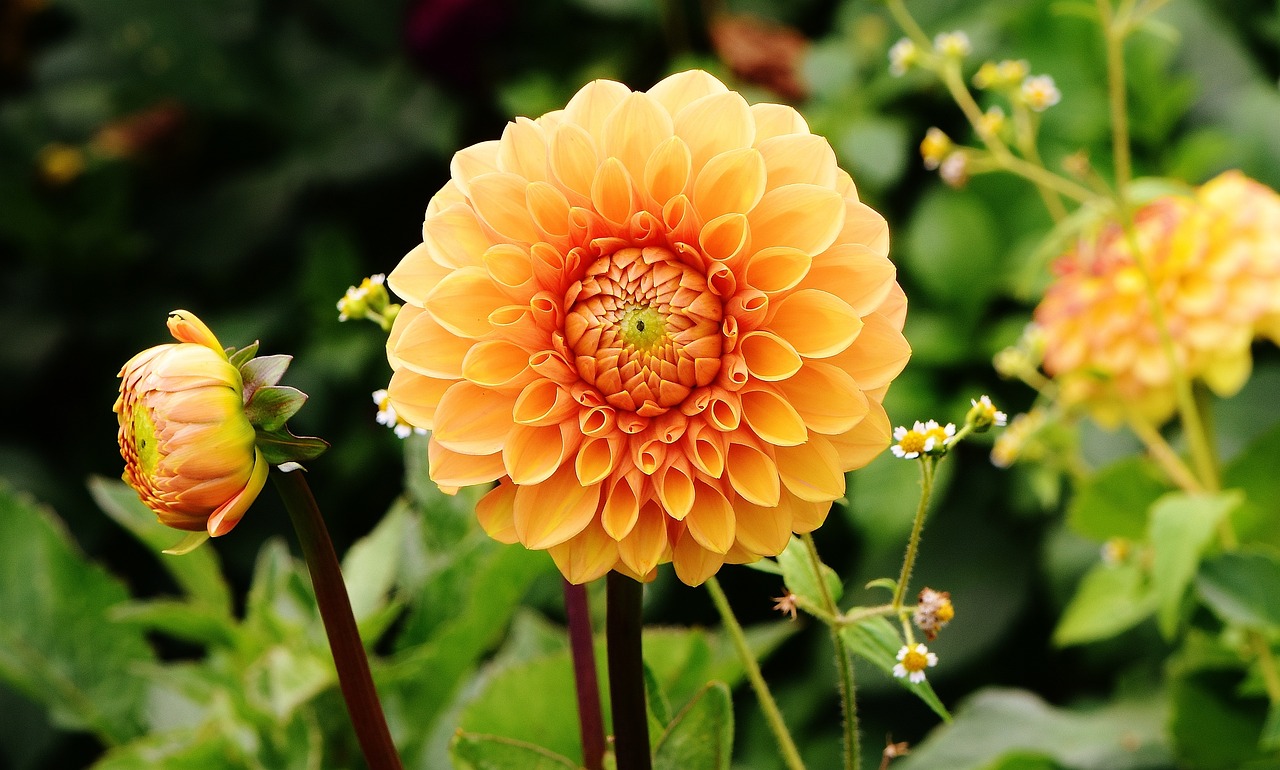
Educate and Involve the Community
When it comes to promoting biodiversity, one of the most powerful tools at our disposal is community engagement. Imagine your neighborhood transformed into a vibrant ecosystem where every garden contributes to the overall health of the environment. By educating and involving the community, we can create a ripple effect that enhances biodiversity not just in individual gardens, but throughout the entire area. So, how can we make this happen?
First off, communication is key. Hosting workshops or informational sessions can be a fantastic way to share knowledge about the importance of biodiversity and the simple steps each person can take in their own garden. These sessions can cover a variety of topics, such as:
- The benefits of native plants
- Organic gardening practices
- Creating pollinator-friendly spaces
- Water conservation techniques
But it doesn’t stop there! Getting hands-on is just as important. Consider organizing community garden projects where neighbors can come together to plant native species, build birdhouses, or create pollinator gardens. This not only enhances the biodiversity of the area but also fosters a sense of community. When people work together towards a common goal, they build connections that can last a lifetime.
Moreover, local schools can play a significant role in this initiative. By integrating biodiversity education into school curriculums, children can learn the importance of ecosystems from a young age. Imagine kids planting seeds and watching them grow, all while understanding how their efforts contribute to a healthier planet. Schools can even establish their own gardens, becoming living classrooms that teach students about sustainable practices.
To further amplify these efforts, consider collaborating with local environmental organizations. They often have resources, expertise, and volunteers who can assist in organizing events or providing educational materials. By joining forces, you can create larger community events, such as biodiversity fairs, where residents can learn, share, and celebrate their efforts in promoting a diverse ecosystem.
Lastly, don't underestimate the power of social media! Create a community group online where members can share their gardening successes, ask for advice, and post pictures of their biodiversity efforts. This not only keeps the momentum going but also inspires others to join the cause. Sharing tips, tricks, and the occasional success story can motivate others to get involved and make a difference.
In conclusion, educating and involving the community is not just a nice idea; it's a necessity for fostering biodiversity in our gardens and beyond. Every action counts, and when we come together as a community, we can create a thriving ecosystem that benefits everyone. So, are you ready to take that first step and engage your community in this vital mission?
Q: Why is community involvement important for biodiversity?
A: Community involvement amplifies individual efforts, creating a larger impact on local ecosystems. When neighbors work together, they can share resources, knowledge, and support, leading to greater biodiversity.
Q: How can I start engaging my community?
A: You can start by organizing workshops, creating community gardens, collaborating with schools, and using social media to connect with others who are interested in promoting biodiversity.
Q: What types of activities can we do as a community?
A: Activities can include planting native gardens, building wildlife habitats, hosting educational events, and participating in local environmental initiatives.
Q: How can schools contribute to promoting biodiversity?
A: Schools can integrate biodiversity education into their curriculums, establish their own gardens, and involve students in hands-on gardening projects that teach sustainable practices.
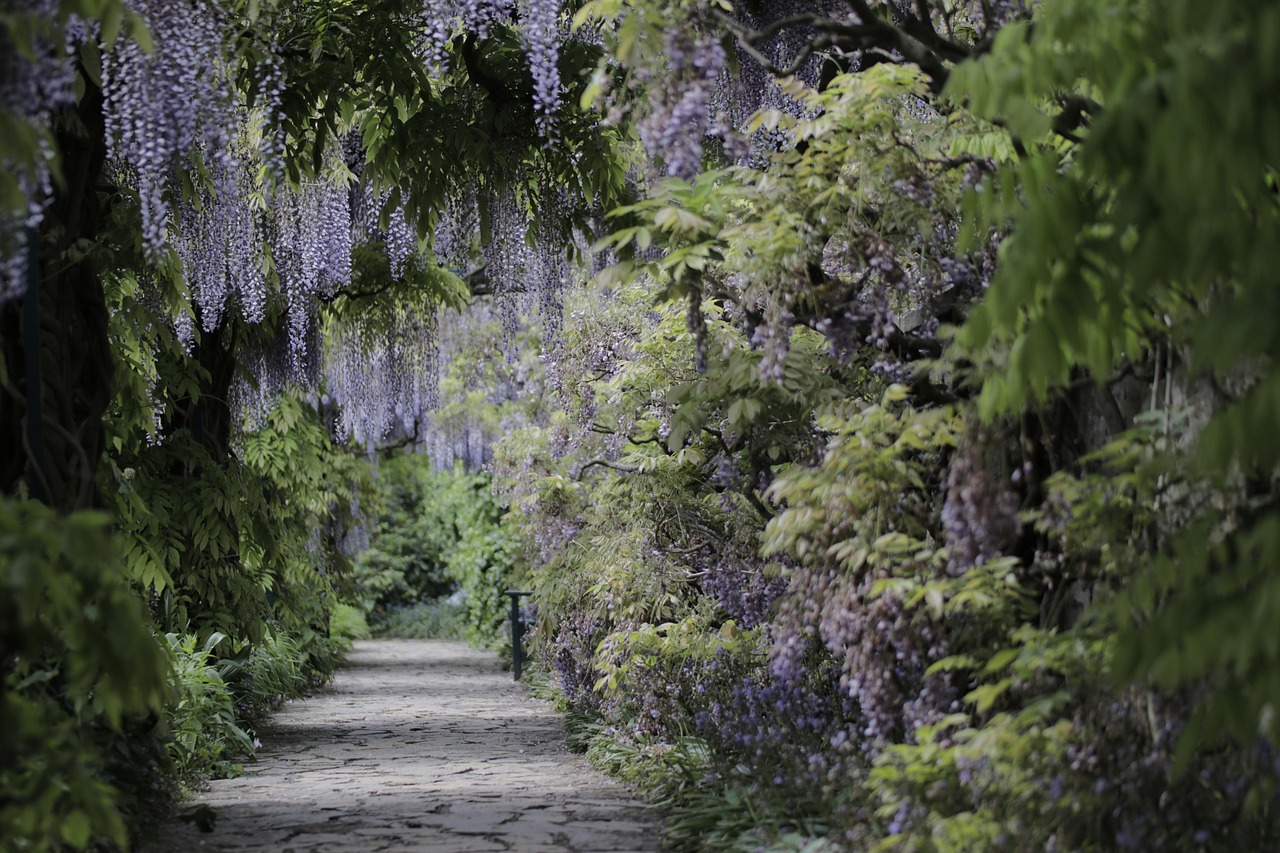
Monitor and Adapt Your Practices
Using native plants in gardens supports local ecosystems by providing food and habitat for native wildlife, while also requiring less maintenance and water compared to non-native species.
Organic gardening avoids synthetic fertilizers and pesticides, promoting a healthier ecosystem. This practice can enhance soil quality and attract beneficial insects, contributing to overall garden biodiversity.
Creating spaces that attract pollinators, such as bees and butterflies, is crucial for plant reproduction. Planting a variety of flowering plants can provide essential resources for these important species.
Adding ponds or birdbaths can create habitats for aquatic life and provide drinking sources for birds and other wildlife, enhancing the biodiversity of your garden ecosystem.
Companion planting involves growing different plants together for mutual benefits, such as pest control and improved growth. This technique can lead to a more diverse and resilient garden.
Building habitats like birdhouses, insect hotels, and brush piles can offer shelter for various species, encouraging them to take up residence in your garden and contribute to its biodiversity.
Minimizing traditional lawn spaces can create opportunities for wildflowers and other plants, fostering a more diverse ecosystem that supports various insects and wildlife.
Engaging neighbors and local organizations in biodiversity initiatives can amplify your efforts. Community gardens and workshops can raise awareness and promote collective action for biodiversity.
Monitoring and adapting your gardening practices is essential for fostering a thriving ecosystem. Just like a chef tastes their dish while cooking, you should regularly assess the health of your garden. This means paying attention to various indicators, such as plant growth, soil quality, and the presence of wildlife. Are your plants thriving, or do they appear stressed? Is the soil rich and dark, or does it seem depleted? Observing these changes can provide valuable insights into what is working and what isn’t.
One effective way to track your garden's health is to keep a garden journal. Document your observations, including the types of plants that flourish and those that struggle. Note the seasons, weather conditions, and any pest issues you encounter. This record will help you identify patterns over time, allowing you to make informed decisions about future planting and care. For example, if you notice that certain plants attract beneficial insects while others repel them, you can adjust your planting strategy accordingly.
Additionally, consider setting up a simple monitoring system. You might create a table to log important data. Here’s a sample format:
| Date | Plant Type | Growth Condition | Wildlife Observed |
|---|---|---|---|
| 2023-10-01 | Milkweed | Thriving | Butterflies |
| 2023-10-01 | Tomatoes | Stressed | None |
By regularly updating this table, you can visualize trends and make necessary adjustments. Perhaps you need to change watering schedules, amend the soil, or even relocate certain plants to better-suited areas. The key is to be flexible and open to change.
Moreover, don't hesitate to seek advice from local gardening groups or online forums. Sharing experiences with fellow gardeners can provide new perspectives and innovative solutions. After all, gardening is a journey, and each season brings new challenges and opportunities. Embrace the process, and remember, every small change you make contributes to a larger impact on biodiversity in your garden.
- What are native plants? Native plants are species that naturally occur in a particular region and have adapted to the local environment.
- How can I attract pollinators to my garden? Plant a variety of flowering plants that bloom at different times of the year to provide food throughout the growing season.
- What is companion planting? Companion planting is the practice of growing different plants together for mutual benefits, such as pest control and improved growth.
- Why is it important to monitor my garden? Regular monitoring helps you identify issues early, allowing you to adapt your practices for a healthier ecosystem.
Frequently Asked Questions
- What are native plants, and why are they important for my garden?
Native plants are species that naturally occur in your region. They are essential because they provide food and habitat for local wildlife, require less water and maintenance, and promote a balanced ecosystem. By incorporating native plants, you help sustain local biodiversity and create a thriving garden environment.
- How can I start organic gardening?
Starting organic gardening is easier than you might think! Begin by eliminating synthetic fertilizers and pesticides from your gardening routine. Instead, use compost, natural fertilizers, and organic pest control methods. This approach not only improves soil health but also attracts beneficial insects, making your garden a vibrant ecosystem.
- What types of plants attract pollinators?
To attract pollinators like bees and butterflies, plant a variety of flowering species that bloom at different times throughout the growing season. Some great options include lavender, coneflowers, and sunflowers. The more diverse your plant selection, the more likely you’ll draw in these essential pollinators!
- Do I need a large space to incorporate water features?
No, you don’t need a massive yard to add water features! Even a small birdbath or a container pond can create a welcoming habitat for wildlife. These features provide drinking water and help attract various species, enhancing the biodiversity in your garden.
- What is companion planting, and how does it work?
Companion planting is the practice of growing different plants together for mutual benefits, like pest control or improved growth. For example, planting marigolds alongside vegetables can deter pests while enhancing the overall health of your garden. It’s a natural way to boost biodiversity and create a resilient ecosystem!
- How can I provide shelter for wildlife in my garden?
You can create shelter for wildlife by building birdhouses, insect hotels, or brush piles. These structures offer safe havens for various species, encouraging them to take up residence in your garden. By providing shelter, you contribute to a richer biodiversity and a more vibrant garden ecosystem.
- Why should I reduce lawn areas in my garden?
Reducing traditional lawn areas allows you to create space for wildflowers and other plants, which fosters a more diverse ecosystem. Lawns often require excessive maintenance and resources, while diverse plantings support a variety of insects and wildlife, enriching your garden’s biodiversity.
- How can I engage my community in biodiversity efforts?
Engaging your community can be as simple as organizing workshops, starting a community garden, or collaborating with local organizations. By sharing knowledge and resources, you can amplify your biodiversity initiatives and inspire others to take action for a healthier ecosystem.
- How often should I monitor my garden's biodiversity?
Regular monitoring is key! Aim to assess your garden at least once a season. This helps you identify successful strategies and areas for improvement, ensuring that your gardening practices continue to support local ecosystems and promote biodiversity effectively.



















